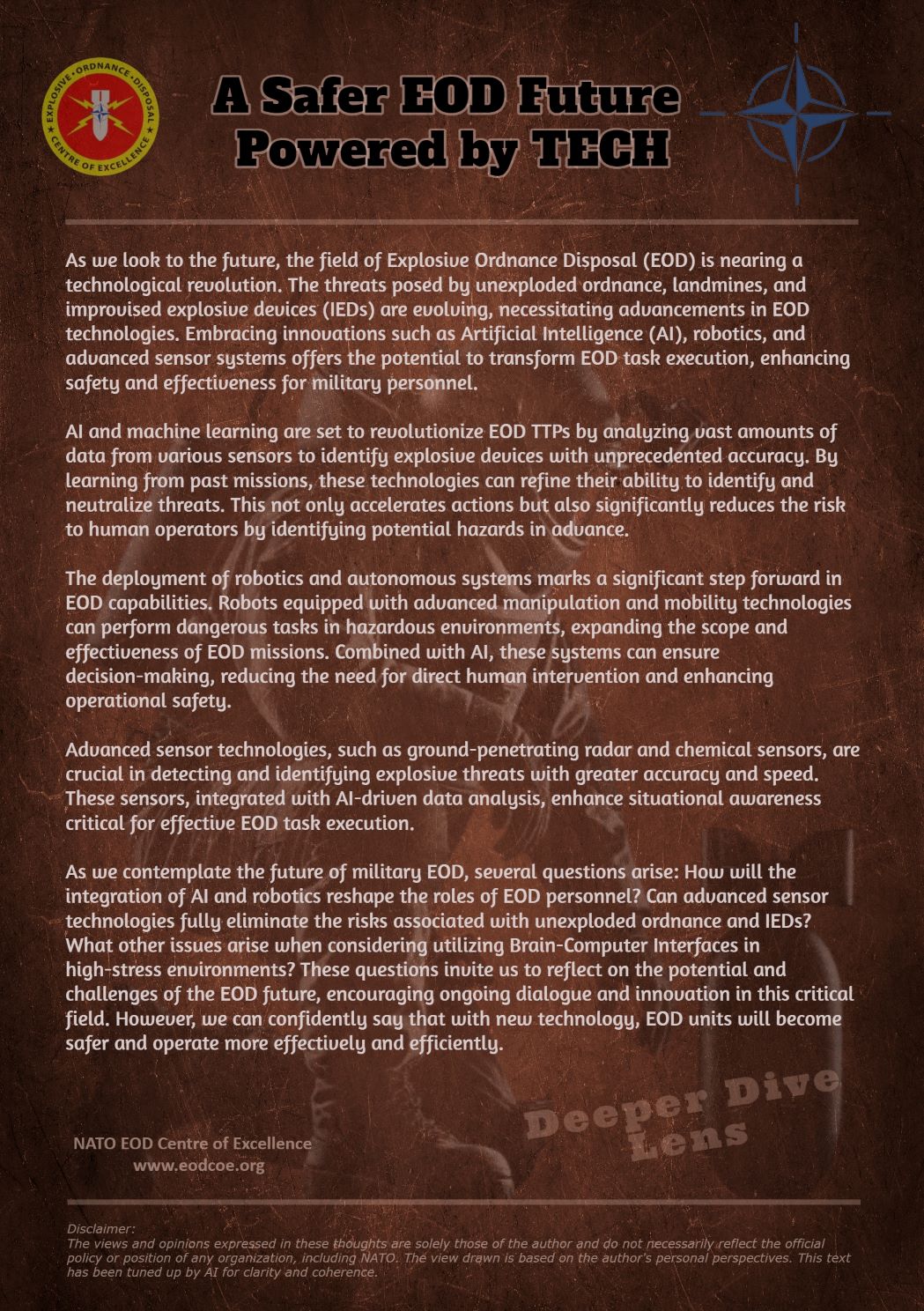
A Safer EOD Future Powered by TECH
As we look to the future, the field of Explosive Ordnance Disposal (EOD) is nearing a technological revolution. The threats posed by unexploded ordnance, landmines, and improvised explosive devices (IEDs) are evolving, necessitating advancements in EOD technologies. Embracing innovations such as Artificial Intelligence (AI), robotics, and advanced sensor systems offers the potential to transform EOD task execution, enhancing safety and effectiveness for military personnel.
AI and machine learning are set to revolutionize EOD TTPs by analyzing vast amounts of data from various sensors to identify explosive devices with unprecedented accuracy. By learning from past missions, these technologies can refine their ability to identify and neutralize threats. This not only accelerates actions but also significantly reduces the risk to human operators by identifying potential hazards in advance.
The deployment of robotics and autonomous systems marks a significant step forward in EOD capabilities. Robots equipped with advanced manipulation and mobility technologies can perform dangerous tasks in hazardous environments, expanding the scope and effectiveness of EOD missions. Combined with AI, these systems enable autonomous decision-making, reducing the need for direct human intervention and enhancing operational safety.
Advanced sensor technologies, such as ground-penetrating radar and chemical sensors, are crucial in detecting and identifying explosive threats with greater accuracy and speed. These sensors, integrated with AI-driven data analysis, provide comprehensive situational awareness critical for effective EOD task execution.
As we contemplate the future of military EOD, several questions arise: How will the integration of AI and robotics reshape the roles of EOD personnel? Can advanced sensor technologies fully eliminate the risks associated with unexploded ordnance and IEDs? What moral concerns arise when considering utilizing Brain-Computer Interfaces in high-stress environments? These questions invite us to reflect on the potential and challenges of the EOD future, encouraging ongoing dialogue and innovation in this critical field. However, we can confidently say that with new technology, EOD units will become safer and operate more effectively and efficiently.